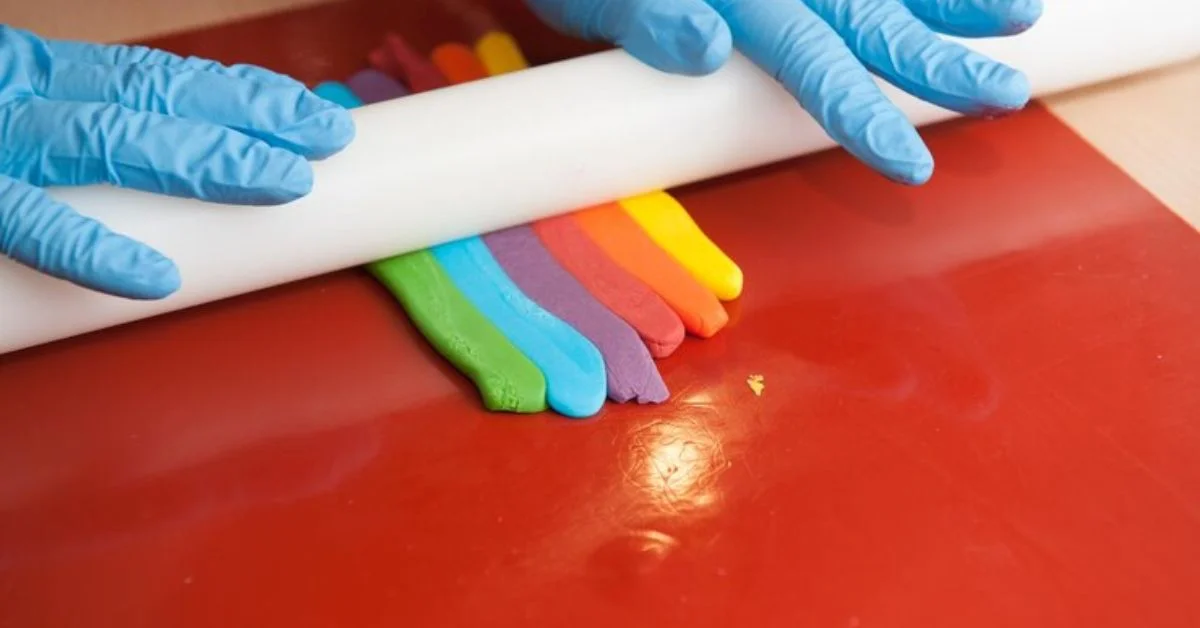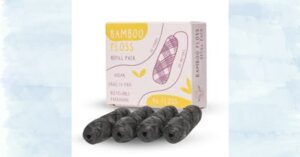In the evolving landscape of industrial manufacturing and materials engineering, composite materials continue to redefine how we build, protect, and innovate. Among them, one material stands out for its versatility, cost-effectiveness, and high-performance applications: the Dough Moulding Compound, commonly referred to as DMC. Despite its relatively low public profile, DMC is a foundational material used across sectors—automotive, electrical, construction, and even consumer goods.
To provide a clear answer upfront: Dough Moulding Compound (DMC) is a thermosetting composite material made of unsaturated polyester resin, mineral fillers, short glass fibers, and various additives, pre-mixed into a dough-like consistency. It is used in compression or injection moulding to produce strong, heat-resistant, and lightweight molded components.
The Basics: What Is Dough Moulding Compound?
Dough Moulding Compound is part of a larger family of fibre-reinforced plastic composites (FRPs). Unlike woven fiber composites used in aerospace or marine engineering, DMC is designed for mass production of precision-moulded parts, combining mechanical strength with dimensional stability and thermal resistance.
Composition of DMC:
- Resin System: Typically unsaturated polyester resin, though vinyl ester and epoxy variants exist for specialized applications.
- Reinforcement: Short-strand glass fibers (3–12 mm in length), accounting for structural strength.
- Filler Materials: Often calcium carbonate, alumina trihydrate, or mica, which improve fire resistance, reduce shrinkage, and lower costs.
- Additives: Curing agents (e.g., peroxides), pigments, release agents, stabilizers, and sometimes flame retardants.
Physical Form:
- Appears as a semi-solid, dough-like mass
- Preformable and can be shaped into billets for loading into moulds
- Requires refrigeration if not used immediately to prevent premature curing
The History and Development of DMC
Dough Moulding Compound emerged in the 1950s and 1960s as industries sought more efficient alternatives to metals and traditional thermoplastics. Initially developed for the automotive and electrical sectors, DMC offered benefits such as:
- Corrosion resistance
- Electrically insulating properties
- Moulding precision and surface finish
Early forms were crude, but by the 1980s, advancements in fiber treatment, resin chemistry, and process automation led to more consistent and high-performance formulations, expanding its use across multiple markets.
Today, DMC is a material of choice in environments that demand fast-cycle manufacturing, reliable performance, and cost-sensitive scalability.
Key Properties and Advantages
DMC offers a compelling set of characteristics that explain its widespread use across industries:
1. Mechanical Strength
- Tensile strength ranges between 40–100 MPa
- Flexural strength can exceed 150 MPa in optimized formulations
- Maintains rigidity under load due to the glass fiber reinforcement
2. Dimensional Stability
- Low shrinkage during curing
- Maintains shape and tolerances in high-temperature or humid conditions
3. Thermal Performance
- Heat distortion temperature (HDT) above 200°C in many grades
- Fire-retardant variants available (UL 94 V-0 rated)
4. Electrical Insulation
- High dielectric strength and low conductivity
- Suitable for switchgear, fuse boxes, and insulation components
5. Corrosion and Chemical Resistance
- Inert to water, salt, acids, and many industrial solvents
- Ideal for outdoor or marine environments
6. Ease of Moulding
- Excellent flow characteristics
- Capable of forming complex geometries with fine surface finishes
- Cycle times often under 3 minutes in hot-press moulding

Manufacturing Process: From Dough to Durable Part
The DMC production and moulding process is efficient, scalable, and highly controlled. Here’s how it typically unfolds:
1. Compound Preparation
All raw materials—resin, fibers, fillers, and additives—are mixed in a kneader or planetary mixer. The goal is to achieve a uniform mass without air entrapment.
2. Preforming
The compound is cut into pre-determined billet sizes or shaped into slugs for loading into moulds.
3. Moulding
Two main methods are used:
a. Compression Moulding
- Most common technique
- Billets are placed into a heated steel mould (typically 130–160°C)
- High pressure (50–150 bar) is applied for 30–300 seconds depending on size
b. Injection Moulding
- Less common but used for high-volume small parts
- DMC is preheated and injected into moulds using plunger or screw-type machines
4. Curing
Chemical curing is triggered by heat and initiators (e.g., benzoyl peroxide), solidifying the polymer matrix.
5. Demoulding and Finishing
- Part is ejected and trimmed if necessary
- Secondary operations like drilling, painting, or coating can be performed
This process allows for repeatable, high-precision part production with low scrap rates.
Applications of DMC in Modern Industry
Dough Moulding Compound is used in thousands of products and components. Its range is vast due to the material’s versatility and performance profile.
1. Electrical and Electronics
- Switchgear housings
- Circuit breaker casings
- Light fixtures
- Transformer components
- Motor enclosures
Its insulating and fire-retardant properties make it a preferred choice in high-voltage and industrial environments.
2. Automotive: Dough Moulding Compound
- Headlamp housings
- Engine covers
- Under-the-hood brackets
- Electric vehicle battery casings
DMC helps reduce vehicle weight while maintaining structural integrity and heat resistance.
3. Appliances
- Washing machine drums
- Microwave oven parts
- Coffee maker housings
- Blender components
DMC provides a safe and durable enclosure for heat- and wear-prone components.
4. Construction and Infrastructure
- Utility meter covers
- Plumbing and drainage components
- Architectural moldings
Because of its corrosion resistance, DMC is also used in harsh weather and marine environments.
5. Renewable Energy
- Wind turbine blade root inserts
- Insulators in solar panel junction boxes
Its low-maintenance and weather-resistant nature align with renewable energy’s long lifecycle demands.
Environmental Considerations
As sustainability becomes a key industry priority, DMC is both a challenge and an opportunity:
Pros:
- Long-lasting with minimal degradation
- Allows lighter parts (especially in transport), reducing fuel/energy consumption
- Recyclable in some mechanical processes if free of hazardous fillers
Cons:
- Thermoset nature means it can’t be melted and re-moulded
- Some variants contain styrene monomers, which are volatile organic compounds (VOCs)
- Disposal can be difficult without pyrolysis or specialized handling
Efforts are underway to develop bio-based resins and styrene-free formulations, making DMC more eco-friendly without compromising performance.
Market Trends and Future Outlook
The global market for DMC is growing steadily, projected to exceed $3 billion by 2030, driven by:
- Electric vehicle expansion
- Miniaturization in electronics
- Increased demand for fire-retardant materials
- Replacement of metal parts in cost-sensitive applications
Emerging developments include:
- Nano-fiber-enhanced DMC for even higher strength
- 3D printable DMC-like compounds
- AI-controlled moulding for cycle time optimization
Companies are also investing in closed-loop recycling, where production waste is reused in new batches—improving both cost and sustainability.
Conclusion: Why Dough Moulding Compound Still Matters
In an industrial age often dominated by buzzwords and futuristic materials, Dough Moulding Compound stands as a quiet, indispensable workhorse. It doesn’t claim to be glamorous or revolutionary, but its practical value, engineering versatility, and economic advantages have secured its place in nearly every sector that relies on durable, high-performance molded components.
From the housing of your home appliances to the critical infrastructure of a power plant, DMC proves that composite materials can be both humble and high-tech. And as industries seek better, faster, and more sustainable solutions, DMC continues to evolve—making it one of the unsung heroes of modern manufacturing.
FAQs: Dough Moulding Compound
1. What is Dough Moulding Compound used for?
Dough Moulding Compound (DMC) is used to manufacture strong, heat-resistant, and insulating components for industries like automotive, electronics, and appliances. Common products include electrical switch housings, headlamp parts, and appliance enclosures.
2. Is DMC recyclable?
Partially. Being a thermoset, DMC cannot be melted and reshaped like thermoplastics. However, mechanical recycling (grinding and reuse) or chemical recycling processes are under development to reduce environmental impact.
3. How is DMC different from SMC?
SMC (Sheet Moulding Compound) uses longer glass fibers and comes in sheet form, while DMC is a dough-like mass with shorter fibers. SMC is often stronger but more expensive and harder to mould in small, intricate forms.
4. Can DMC be used outdoors?
Yes. Its weather resistance and corrosion-proof properties make it ideal for outdoor applications such as utility meter covers and marine-grade components.
5. Is DMC safe for electrical applications?
Absolutely. DMC is widely used in high-voltage environments due to its high dielectric strength, fire resistance, and thermal stability.
For more information, click here.









